|
Books Should Be Free Loyal Books Free Public Domain Audiobooks & eBook Downloads |
|
|
Books Should Be Free Loyal Books Free Public Domain Audiobooks & eBook Downloads |
|
Historical Fiction |
|---|
|
Book type:
Sort by:
View by:
|
By: Israel Zangwill (1864-1926) | |
|---|---|
 Children of the Ghetto
Children of the Ghetto
In this 1892 novel of London's Jewish East End, Israel Zangwill sets the apparently irrational and decidedly indecorous religious practices of transplanted eastern European Jews against the forces of assimilation. Zangwill's knowledge of Yiddishkeit and skill in melodrama created a series of unforgettable vignettes that had a significant effect on the public perception of this much stigmatized immigrant group. Israel Zangwill (1864-1926) was born in London of Russian and Polish parents. He coined the term cultural "melting pot". | |
By: Ivan S. Turgenev (1818-1883) | |
|---|---|
 Fathers and Children
Fathers and Children
| |
 On the Eve
On the Eve
On the Eve appeared in 1860, two years before Fathers and Sons, Turgenev's most famous novel. It is set in the prior decade (by the end of the novel, the Crimean War (1853-56) has already broken out. It centers on the young Elena Nikolaevna Stakhov, daughter of Nikolai Arteyemvitch and Anna Vassilyevna Stahov. Misunderstood by both her parents (Nikolai Artemyevitch is at least as interested in his German mistress as in members of her family) she is on friendly terms with both the would-be professor Andrei Petrovitch Bersenyev and the rising young sculptor Pavel Yakovitch Shubin, both of whom might be -- or might not be -- in love with her... | |
By: Ivan Turgenev (1818-1883) | |
|---|---|
 Virgin Soil Volume 1
Virgin Soil Volume 1
Turgenev's last and longest novel presents the story of a group of young people in late nineteenth century Russia, who because of disillusionment with the country's entrenched traditional hierarchies and power relationships, seek to foment revolutionary activity especially among the peasant and working classes, pursuing a Populist "cause". The novel throws together some disparate personalities, from aesthetes to aristocracy to works managers to fools, and exposes the real human emotions and tensions generated by the cause. The publication being read is divided into two volumes; this first one includes Chapters 1-20, approximately half the book. Volume 2 is catalogued separately. | |
 Virgin Soil Volume 2
Virgin Soil Volume 2
The second volume of Turgenev's last novel sees social change bubbling up into conflict with the established order and interacting with the fates of the characters, testing their resolve and motivations to the limit. The publication being read is divided into two volumes; the first one includes Chapters 1-20, approximately half the book, and is catalogued separately. This recording is Volume 2, including chapters 21-38. | |
By: J. Breckenridge (John Breckenridge) Ellis (1870-1956) | |
|---|---|
 Lahoma
Lahoma
| |
By: J. M. Barrie (1860-1937) | |
|---|---|
 Echoes of the War
Echoes of the War
Short stories with dramatic parts about civilian life in London during the First World War. Some humorous moments. By the author of "Peter Pan". | |
By: J. Thomas Warren | |
|---|---|
 Northern Spy
Northern Spy
The Northern Spy, written in the 1800s, is a lively story about a Union soldier who infiltrates a Confederate battalion in order to aid in the conquering of South Carolina. The novel was very popular, so much so that allegedly Northern Spy apples were named for the hero of the story. - Summary by A. Gramour | |
By: J. Walker McSpadden (1874-1960) | |
|---|---|
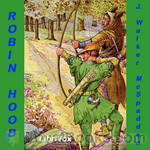 Robin Hood
Robin Hood
Robin Hood is a heroic outlaw in English folklore. A highly skilled archer and swordsman, he is known for "robbing from the rich and giving to the poor", assisted by a group of fellow outlaws known as his "Merry Men". Traditionally Robin Hood and his men are depicted wearing Lincoln green clothes. The origin of the legend is claimed by some to have stemmed from actual outlaws, or from ballads or tales of outlaws. | |
By: Jack London (1876-1916) | |
|---|---|
 When God Laughs, and Other Stories
When God Laughs, and Other Stories
This collection of Jack London's short stories touches on a variety of topics, from his love of boxing, to relationships between criminals, to the trials of life and travel on many frontiers, to an allegory about a king who desired a nose. London is considered a master of the short story, a form much more to his liking and personality than his novels. He was active and quick of mind and the short story suited him well. | |
By: Jacob Abbott (1803-1879) | |
|---|---|
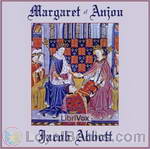 Margaret of Anjou
Margaret of Anjou
Margaret of Anjou, wife of England’s Henry VI, played a key role in launching the storied War of the Roses – the 30-year civil conflict fuelled by the Lancasters and the Yorks, each vying for the British throne in the 15th century. (Summary by Cathy Barratt.) | |
By: James Baikie | |
|---|---|
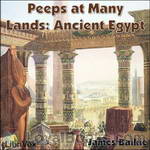 Peeps at Many Lands: Ancient Egypt
Peeps at Many Lands: Ancient Egypt
Written primarily for children, James Baikie’s ‘peep’ at ancient Egypt is a really well done, historical account of the ways of that fascinating land so many years ago. It has stood well the test of time, being both well researched and well written. It’s a fun book for everyone, and families especially will enjoy listening together. | |
By: James Driscoll | |
|---|---|
 The Brighton Boys in the Radio Service
The Brighton Boys in the Radio Service
The Brighton Boys in the Radio Service is a boys adventure story set in WWI – Three College Chums join the military and face the perils of spies, submarines and enemy soldiers in the trenches of embattled Europe. An engaging story set in a period where good guys wore white hats, bad guys wore black hats and every chapter ends with a cliffhanger so you have to come back for more! | |
By: James Fenimore Cooper (1789-1851) | |
|---|---|
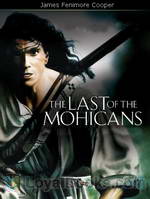 The Last Of The Mohicans
The Last Of The Mohicans
The Last of the Mohicans is an epic novel by James Fenimore Cooper, first published in January 1826. It was one of the most popular English-language novels of its time, and helped establish Cooper as one of the first world-famous American writers.The story takes place in 1757 during the French and Indian War, when France and Great Britain battled for control of the American and Canadian colonies. During this war, the French often allied themselves with Native American tribes in order to gain an advantage over the British, with unpredictable and often tragic results. | |
 The Spy
The Spy
Between 1865-73 the tumultuous American Revolution rages on in different battlefields. The air is thick with hatred and suspicion as the Continental and British armies clash in bloody warfare. In Westchester County, New York, an area is considered a neutral ground for both forces, Harvey Birch plies his dangerous mission. An innocuous peddler by day, he is in fact an American spy, though he does nothing to correct anyone who assumes he is a British spy. In a magnificent country mansion, The Locusts, live the wealthy Whartons... | |
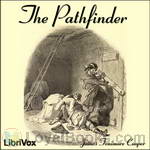 The Pathfinder
The Pathfinder
Natty Bumppo goes by many names: La Longue Carabine, Hawk Eye, Leatherstocking, and in this tale, The Pathfinder. Guide, scout, hunter, and when put to it, soldier, he also fills a lot of roles in pre-Revolution upstate New York. An old friend, Sergeant Dunham of the 55th Regiment of Foot, asks him to guide his daughter through the wilderness to the fort at Oswego where Dunham serves. With the French engaging native Indian allies against the British and the Yankee colonists, such a journey is far from safe... | |
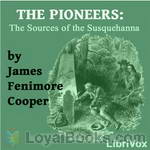 The Pioneers
The Pioneers
The Pioneers: The Sources of the Susquehanna; a Descriptive Tale is one of the Leatherstocking Tales, a series of five novels by American writer James Fenimore Cooper. The Pioneers was first of these books to be published (1823), but the period of time covered by the book (principally 1793) makes it the fourth chronologically. (The others are The Deerslayer, The Last of the Mohicans, The Pathfinder, and The Prairie.)The story takes place on the rapidly advancing frontier of New York State and features... | |
 Prairie - A Tale
Prairie - A Tale
The story opens with Ishmael, his family, Ellen and Abiram slowly making their way across the virgin prairies of the Midwest looking for a homestead, just two years after the Louisiana Purchase, and during the time of the Lewis and Clark Expedition. They meet the trapper (Natty Bumppo), who has left his home in New York state to find a place where he cannot hear the sound of people cutting down the forests. In the years between his other adventures and this novel, he tells us only that he has walked all the way to the Pacific Ocean and seen all the land between the coasts (a heroic feat, considering Lewis and Clark hadn’t yet completed the same trek). | |
 The Two Admirals
The Two Admirals
| |
 The Chainbearer Or, The Littlepage Manuscripts
The Chainbearer Or, The Littlepage Manuscripts
| |
 Heidenmauer; or, The Benedictines. A Legend of the Rhine
Heidenmauer; or, The Benedictines. A Legend of the Rhine
This is a story that is set in 16th century Germany. Characters representing the various classes of the remnants of feudalism and the rising bourgeois class struggle against each other. Placed in the light of the very recent and polarizing Protestant Reformation, the characters' tensions increase. - Summary by Joel Kindrick | |
By: James Oliver Curwood | |
|---|---|
 The Alaskan
The Alaskan
This story opens with a young woman who voyages alone into the wilds of Alaska to escape her tragic past. It then continues on to a young man who passionately protects the pristine environment, people and way of life in this snowbound country. Finally, a greedy profiteer arrives in the narrative whose only aim is to fill his pockets. When these three characters encounter each other on the stark and snowy plains, it's a clash of ideals and the sparks begin to fly. The Alaskan by James Oliver Curwood is one of his very engaging adventure romance conservationist stories and was an instant bestseller, like most of his books, when it was first published in 1923... | |
 God's Country—And the Woman
God's Country—And the Woman
James Curwood wrote many adventures of the far north. By 1909 he had saved enough money to travel to the Canadian northwest, a trip that provided the inspiration for his wilderness adventure stories. The success of his novels afforded him the opportunity to return to the Yukon and Alaska for several months each year that allowed him to write more than thirty such books. The Canadian North is often referred to as “God’s Country” God’s Country is a tale of adventure, mystery and romance! | |
By: James Otis (1848-1912) | |
|---|---|
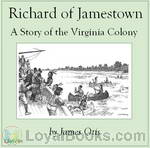 Richard of Jamestown: A Story of the Virginia Colony
Richard of Jamestown: A Story of the Virginia Colony
Richard of Jamestown by James Otis was written for children with the purpose to show them the daily home life of the Virginia colonists. It is written from the viewpoint of a young boy named Richard Mutton. | |
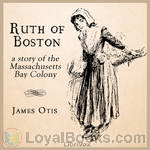 Ruth of Boston: A Story of the Massachusetts Bay Colony
Ruth of Boston: A Story of the Massachusetts Bay Colony
James Otis wrote a series of books depicting life in the new colonies, written from a child’s point of view. Ruth of Boston is the story of 12 year old Ruth, coming from London to live in the Massachusetts Bay Colony. It gives accounts of what a girl’s daily life might have been like during the beginnings of this colony. | |
By: Jane Porter (1776-1850) | |
|---|---|
 The Scottish Chiefs
The Scottish Chiefs
An adventure novel about William Wallace, one of the most popular books ever written by Jane Porter. The French version was even banned by Napoleon, and the book has remained very popular with Scottish children, but is equally enjoyable for adults. | |
By: Joaquín Telesforo de Trueba y Cosío (1799?-1835) | |
|---|---|
 Gómez Arias Or, The Moors of the Alpujarras, A Spanish Historical Romance.
Gómez Arias Or, The Moors of the Alpujarras, A Spanish Historical Romance.
| |
By: John A. Joyce | |
|---|---|
 Shakspere: Personal Recollections
Shakspere: Personal Recollections
Recording of Shakspere: Personal Recollections, by John A. Joyce.A fictitious account of a "friend" of William Shakespeare, who accompanies him from his birth to his death and beyond, chronicling Shakespeare's life, adventures, speeches, and impromptu bursts of poetry. | |
By: John Ackworth (1854-1917) | |
|---|---|
 Doxie Dent
Doxie Dent
Following the short story collections, Clog Shop Chronicles and Beckside Lights, John Ackworth completed the adventures of clogger Jabez Clegg and his Beckside cronies with a novel. Jabez's niece, the young and vivacious Doxie Dent, has grown up in 'Lunnon'. Arriving in the Lancashire village that is cloggers home, she delights the villagers with her southern ways, but Jabez remains unimpressed... | |
By: John Dos Passos (1896-1970) | |
|---|---|
 Three Soldiers
Three Soldiers
Three Soldiers, the second novel by John Dos Passos, follows the experiences of several young Americans thrown into the confusion and brutality of World War I.Written when the author was just twenty-three, it was key to the development of a realistic depiction of war in American literature, and earned Dos Passos, later named by Jean-Paul Sartre "the greatest living writer of our time", important early attention.Critic H L Menken said of it: "no war story can be written in the United States without challenging comparison with it--and no story that is less meticulously true will stand up to it... | |
By: John Fox (1863-1919) | |
|---|---|
 The Little Shepherd of Kingdom Come
The Little Shepherd of Kingdom Come
| |
By: John Galsworthy (1867-1933) | |
|---|---|
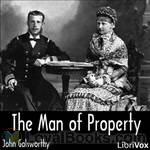 The Man of Property
The Man of Property
The first book in Galsworthy’s trilogy, The Forsyte Saga, The Man of Property revolves around the lives of the Forsytes, a self-conceited and cold family, who place a high value on propagating money and rising from their yeoman roots. The novel chronicles the events that lead to their inevitable demise, which is instigated by the stuffy man of property, Soames Forsyte, as he pursues the ideals of the preceding generation, whilst maintaining his own obsession with ownership. At the same time, Galsworthy candidly criticizes the values of the upper-middle classes, by means of satire, irony, a mixed array of realistic characters, an evocative setting, and an intricate plot... | |
 Beyond
Beyond
Gyp, the daughter of ex-Major Charles Claire Winton, at the age of 23 marries Fiorsen, a Swedish violin virtuoso. Her mother, the wife of another man, has been Winton's mistress; she had died when Gyp was born. A highly sensitive child, Gyp has grown up in isolated surroundings with a kind, but very British, father. As she gets older her father tries to introduce her into society. An attack of gout takes him to Wiesbaden for a cure and, as he never goes anywhere without her, she accompanies him... | |
By: John Galt (1779-1839) | |
|---|---|
 Ringan Gilhaize or The Covenanters
Ringan Gilhaize or The Covenanters
| |
By: John Kendrick Bangs (1862-1922) | |
|---|---|
 Peeps at People - Being Certain Papers from the Writings of Anne Warrington Witherup
Peeps at People - Being Certain Papers from the Writings of Anne Warrington Witherup
Written by a fictitious first-person narrator, this book puts a humorous spin on encounters with several famous people of the time. "I set forth from my office in London upon my pilgrimage to the shrines of the world's illustrious. Readers everywhere are interested in the home life of men who have made themselves factors in art, science, letters, and history, and to these people I was commissioned to go." -- Summary by TriciaG and from the book. | |
By: John R. Musick (1849-1901) | |
|---|---|
 The Witch of Salem
The Witch of Salem
A Historical Novel about the Salem Witch Trials. A fantastic illustrated historical novel by the prolific American author John R. Musick From the author’s preface: The "Witch of Salem" is designed to cover twenty years in the history of the United States, or from the year 1680 to 1700, including all the principal features of this period. Charles Stevens of Salem, with Cora Waters, the daughter of an indented slave, whose father was captured at the time of the overthrow of the Duke of Monmouth, are the principal characters... | |
By: Jonathan Nield (1863-) | |
|---|---|
 A Guide to the Best Historical Novels and Tales
A Guide to the Best Historical Novels and Tales
| |
By: José Rizal (1861-1896) | |
|---|---|
 Friars and Filipinos An Abridged Translation of Dr. Jose Rizal's Tagalog Novel, 'Noli Me Tangere.'
Friars and Filipinos An Abridged Translation of Dr. Jose Rizal's Tagalog Novel, 'Noli Me Tangere.'
| |
 An Eagle Flight A Filipino Novel Adapted from Noli Me Tangere
An Eagle Flight A Filipino Novel Adapted from Noli Me Tangere
| |
By: Joseph A. Altsheler (1862-1919) | |
|---|---|
 Last Rebel
Last Rebel
Arthur West has been taken as a prisoner of war by Colonel Hetherhill of the Confederate States of America, and imprisoned at Fort Defiance, where an oddly small number of soldiers are stationed. More odd than the size of the fort's company, however, is the fact that the Civil War ended thirty years prior to West's capture. This is the story of West's attempts to regain his freedom. - Summary by David Gore | |
By: Joseph Alexander Altsheler (1862-1919) | |
|---|---|
 The Young Trailers: A Story of Early Kentucky
The Young Trailers: A Story of Early Kentucky
This is the story of Henry Ware, a young boy living in the wilds of the Kentucky frontier of the 1700's. The story follows Henry as he helps to establish a frontier outpost, is captured by an Indian tribe, and ultimately ensures the safety and security of a band of settlers against the warring Shawnee Indians. The Young Trailers is action packed and brings to life the adventures that awaited the early settlers as they traversed into the endless forests of the American frontier. | |
 The Guns of Shiloh
The Guns of Shiloh
The Northern Army has just be handed a great defeat at Bull Run and is headed back to Washington, DC. How will the North answer this defeat? Follow our hero, Dick Mason, into the Western campaign to find out.This is the second book in the Civil War Series by Joseph A. Altsheler. | |
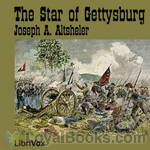 The Star of Gettysburg
The Star of Gettysburg
The Army of Northern Virginia, still victorious after three hard years of fighting, capitalize on their victories at Fredericksburg and Chancellorsville, and a young Harry Kenton, is an eyewitness to the Confederate invasion of the north, culminating in the epic three-day struggle at Gettysburg, Pennsylvania, where Robert E. Lee puts into place a strategy that will end the war, or shatter his army. (Introduction by Robert Fletcher) | |
 Guns of Bull Run
Guns of Bull Run
The first volume in the Civil War series, following the adventures of Harry Kenton, who leaves his home in Kentucky. He travels through dangerous territory to South Carolina on a secret mission on the eve of the Civil War. (From Chapter 4) "They will not fire! They dare not!" cried Shepard in a tense, strained whisper. As the last word left his lips there was a heavy crash. A tongue of fire leaped from one of the batteries, followed by a gush of smoke, and a round shot whistled over the Star of the West... | |
 The Last of the Chiefs A Story of the Great Sioux War
The Last of the Chiefs A Story of the Great Sioux War
| |
 Sword of Antietam
Sword of Antietam
"The Sword of Antietam" tells a complete story, but it is one in the chain of Civil War romances, begun in "The Guns of Bull Run" and continued through "The Guns of Shiloh" and "The Scouts of Stonewall." The young Northern hero, Dick Mason, and his friends are in the forefront of the tale. | |
 Scouts of Stonewall
Scouts of Stonewall
In this third book of Joseph Altsheler's Civil War series, Harry Kenton, a lieutenant in the Southern Army, is on scout patrol in the Shenandoah Valley. He has attracted the notice of the great General Stonewall Jackson after his regiment, the Invincibles of South Carolina, suffered great losses at the Battle of Bull Run. As the war continues, Harry meets each challenge that he faces with his close friends and fellow warriors. | |
 The Scouts of the Valley
The Scouts of the Valley
| |
 Shades of the Wilderness
Shades of the Wilderness
"The Shades of the Wilderness" is the seventh book of the Civil War Series by Joseph A. Altsheler. Picking up where "The Star of Gettysburg" left off, this story continues the Civil War experiences of Harry Kenton and his friends in the Southern army, from the retreat after Gettygurg, to Richmond, and then through the battles of the Wilderness and Spottsylvania, to Robert E. Lee's heroic stand during the siege of Petersburg. Other books in the Civil War series are: "The Guns of Bull Run," "The Guns of Shiloh," "The Scouts of Stonewall," "The Sword of Antietam", "The Star of Gettysburg","The Rock of Chickamauga", and "The Tree of Appomattox." | |
By: Joseph Conrad | |
|---|---|
 The Point of Honor
The Point of Honor
Set during the Napoleonic Wars, “The Point of Honor” (English title: “The Duel”) features two French Hussar officers, D’Hubert and Feraud. Their quarrel over an initially minor incident turns into a bitter, long-drawn out struggle over the following fifteen years, interwoven with the larger conflict that provides its backdrop. At the beginning, Feraud is the one who jealously guards his honor and repeatedly demands satisfaction anew when a duelling encounter ends inconclusively; he aggressively pursues every opportunity to locate and duel his foe... | |
 Under Western Eyes
Under Western Eyes
Under Western Eyes (1911) is a novel by Joseph Conrad. The novel takes place in St. Petersburg, Russia, and Geneva, Switzerland, and is viewed as Conrad's response to the themes explored in Crime and Punishment, Conrad being reputed to have detested Dostoevsky. It is also, some say, Conrad's response to his own early life; his father was a famous revolutionary imprisoned by the Russians, but, instead of following in his father's footsteps, at the age of sixteen Conrad left his native land forever... | |
By: Jules Verne (1828-1905) | |
|---|---|
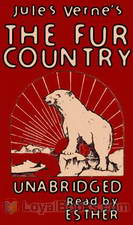 The Fur Country
The Fur Country
The Hudson's Bay Company is one of the earliest corporations in the world and the oldest commercial organization in North America. It began as a fur trading company in 1670 and today owns a variety of retail corporations selling a diverse range of goods. In The Fur Country by Jules Verne, the plot describes how a team of Hudson's Bay Company members travel through the Northwest Territory of Canada with the aim of establishing a mission on the Arctic Circle. The members are a mixed bunch. One of the ladies, Paulina Barnett, seeks adventure, while a meteorologist Thomas Black hopes to view a spectacular solar eclipse scheduled to occur during their travel... | |
 Michael Strogoff
Michael Strogoff
This is the account of the perilous mission of Michael Strogoff, courier for Czar Alexander II, who is sent from Moscow to the besieged city of Irkutsk, where the governor, brother of the Czar, has taken his last stand against a Tartar rebellion led by the fearsome Feofar-Khan. When telegraph lines are cut between the Russian Far East and the mainland, Strogoff must make his way through hostile territory to warn the governor of the return of the traitor Ivan Ogareff, a disgraced former officer who seeks vengeance against the Tsar’s family by the destruction of Irkutsk. | |
 The Blockade Runners
The Blockade Runners
Writing at the end of the American Civil War, Verne weaves this story of a Scottish merchant who, in desperation at the interruption of the flow of Southern cotton due to the Union blockade, determines to build his own fast ship and run guns to the Confederates in exchange for the cotton piling up unsold on their wharves. His simple plan becomes complicated by two passengers who board his new ship under false pretenses in order to carry out a rescue mission, one which Capt. Playfair adopts as his own cause. This is going make the Rebels in Charleston rather unhappy with him.Sure, his new ship is fast - but can it escape the cannonballs of both North and South? | |
By: Julian Corbett (1854-1922) | |
|---|---|
 For God And Gold
For God And Gold
Sir Julian Stafford Corbett was a prominent navy historian and geologist. This semi-autobiographical novel tells about the start: the personal and professional life of a scholar, the excitement of sailing, and joining the navy. - Summary by Stav Nisser. | |
By: Katharine S. Prichard (1883-1969) | |
|---|---|
 The Pioneers
The Pioneers
The Pioneers is set against the background of pioneering life in the Gippsland region of Victoria in pre-Federation Australia. Mary and Donald Cameron are free-settlers who make a home in the wilderness and grow a prosperous cattle operation that establishes their position as prominent members of the new settlement.At first, the novel privileges Mary’s perspective as she encounters escaped convicts, bush fires, and raising a son in a remote community. Later, it follows her son, Davey, as he struggles for independence against his father’s harsh authority... | |
By: Katherine Thurston (1875-1911) | |
|---|---|
 The Masquerader
The Masquerader
The Masquerader is one of two Katherine Cecil Thurston’s books that appeared on the Publisher’s Weekly best-sellers list in 1905. The Masquerader is part mystery, part romance and part political thriller – all tied up in one neat package. Nature has a way of sometimes making two people nearly indistinguishable in appearance. Such is the premise for this book. John Chilcote, a British politician, and John Loder, a man down on his luck meet by accident one night during one of London’s worst fogs... | |
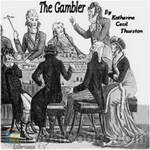 The Gambler
The Gambler
Clodagh, 18 years old, is the eldest daughter of Dennis Asshlin, an Irish gentleman who lives in an area of Ireland called Orristown. Dennis is passionate, proud and indebted to no one. But, Dennis has an obsession with gambling that is leading the family to ruin. When tragedy strikes, Clodagh finds herself in a situation where she must defend the family honor because “no Asshlin is ever obliged to anyone”. She marries a man she does not love who is many times her age and is thrust from adolescence to adulthood literally overnight... | |
By: Lafcadio Hearn (1850-1904) | |
|---|---|
 Chita: a Memory of Last Island
Chita: a Memory of Last Island
| |
By: Lawrence Turnbull (-1927) | |
|---|---|
 The Royal Pawn of Venice A Romance of Cyprus
The Royal Pawn of Venice A Romance of Cyprus
| |